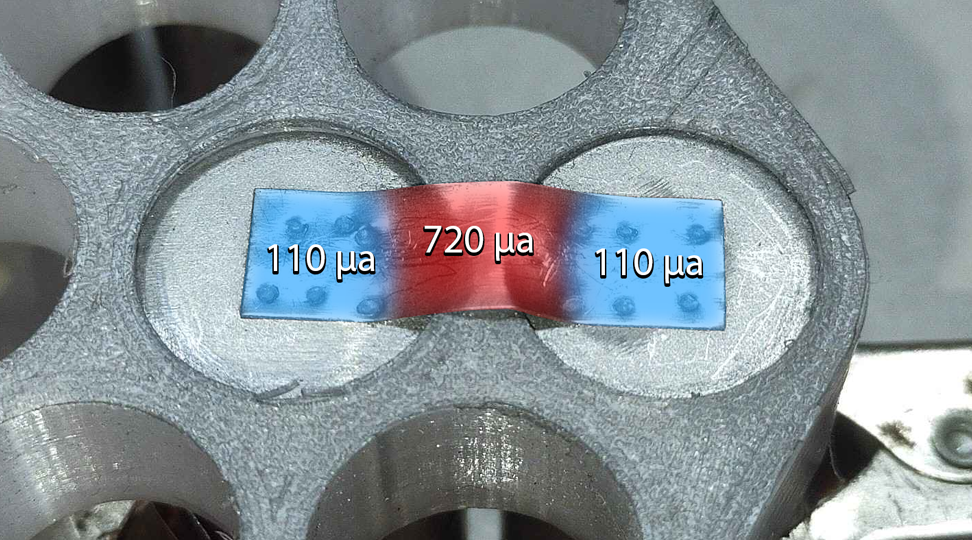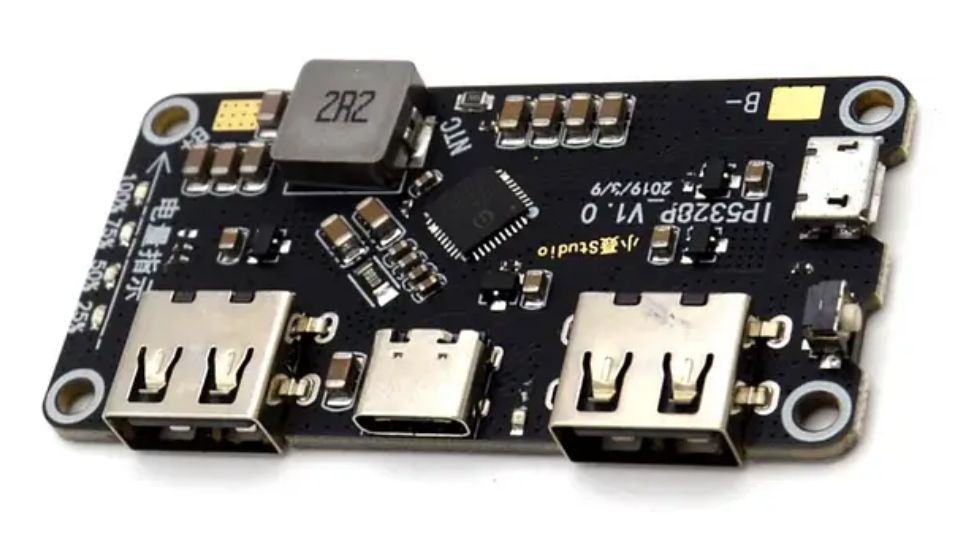
72 Volt Battery
Table of Contents
Ah yes, the 72 volt battery, the ultimate goal for any e-bike enthusiast. And while the 72 volt battery is desired by so many, they can often be misunderstood. In this article, we'll talk about all of the benefits related to 72 volt batteries, whether a 72 volt battery is worth it, and what really are the performance and efficiency benefits when considering a 72 volt battery over, say, a 48 volt battery or a 52 volt battery. We'll answer some other key questions, such as: can you combine two 36 volt batteries to make one 72 volt battery? And much, much more. So, let's get started.
What Is A 72V Battery?
First of all, what is a 72 volt battery? Well, that quickly brings us to a problem. Batteries are given a voltage just to make it easy to explain them to people. In reality, a battery is never 72 volts. A 12 volt battery is never 12 volts. It's not 12 volts most of the time; it's not 12 volts a good chunk of the time—it’s basically never 12 volts. How batteries work is they have some sort of voltage, and as you use them, the voltage falls. So, a 72 volt battery, if it had a full charge voltage of 72 volts, would never be a 72 volt battery because the voltage would immediately start falling.
Battery Voltage And Chemistry
'We get to these battery voltage numbers by using something called the cell's nominal voltage. For NMC chemistry—which is the most popular type of lithium ion battery—the nominal voltage is 3.7 volts per cell. So, to get to 72 volts, you have to put 20 of those cell groups in series. The funny thing is that doesn't even bring you to 72 volts; that brings you to 74 volts.
Then, we have to go back to the data sheet and realize that sometimes they go by 3.6 volts nominal voltage, other times they go by 3.7 volts. It doesn't really have much to do with the chemistry specifically—it's more about marketing. Because regardless of a 3.6 volt nominal or a 3.7 volt nominal cell, they never go to those voltages. That's just an average of the general area it's going to be most of the time.
It's true that the cell voltage starts to fall quickly when it's at 4.2, then slows down as it gets closer to 3.7, and then speeds up again as it's leaving that area. But it never goes to 3.7 or 3.6. If it ever is 3.7, it's for a fleeting, tiny moment. The point I'm trying to make is that there's really no such thing as a 72 volt battery; but we've got ourselves in this situation where we call a certain type of battery a 72 volt battery.
That's generally going to be a battery that has a nominal voltage of 72 volts. You get to that by putting a certain amount of cell groups in series. If it's NMC chemistry, as I just said, it takes 20 cell groups in series. But LFP, which is another popular lithium ion chemistry, has a lower voltage. So, you take the 72 volts and divide that by 3.2, and you get 22.5. And since we can't do half a cell group, we have to do 23 cell groups in series.
That means if you have a 72 volt battery that's made with NMC chemistry, it will have a voltage range of about 60 volts to 84 volts. But if you've got a 72 volt battery with LFP chemistry, it's got a voltage range of about 62 to 85.1 volts. It's pretty confusing, right? The good news is that generally any 72 volt device will work in the range of a 72 volt battery, and there's always some amount of wiggle room there.
So, to get back to the question of what is a 72 volt battery, with today's common battery technologies, that would be a lithium ion NMC battery that has 20 cell groups in series, a lithium ion LFP battery that has 23 cell groups in series, or a lead acid battery with a whopping 36 cell groups in series because of the stunningly low nominal voltage of 2.0 volts.
Combining Two 36 Volt Batteries to Make a 72 Volt Battery
So, can you combine two 36 volt batteries to make a 72 volt battery? Yes, you can, but you can only use it until one of them dies. I'll explain.
If you're combining batteries—and using batteries and all of that—I'm just going to go ahead and assume that you're using a BMS. If you're not using a BMS, then we have a whole additional problem, and you should probably check out our article on BMS.
Understanding the BMS (Battery Management System)
Combining two 36 volt batteries into one 72 volt battery requires that both of those batteries have a BMS. You'll run into this issue:
First of all, I’ve got to do a quick primer on a BMS. A BMS keeps track of all the important stuff going on in your batteries, like the individual cell voltages, the current, and stuff like that. If anything goes out of spec, it turns the battery off. It's able to do that because all of the current flows through a MOSFET, and it can control the gate of that MOSFET and use it as a switch to control the flow of current.
The MOSFETs used as switches inside a BMS are rated for a particular voltage. They can't handle just any voltage. The company that manufactures the BMS is going to select the most economically viable MOSFETs for the job. So, you can bet that the MOSFETs inside a 36 volt BMS aren't going to be rated for much more than the max charge voltage of a 36 volt battery.
Seeing as we know the max charge voltage of a 36 volt battery is 42 volts, and we know the MOSFETs on the inside of the BMS will be able to handle at least that—and probably a little bit of buffer unless they're a really, really shady electronics manufacturer—this means you can probably get away with maybe 50 or 52 volts, but it's hard to find MOSFETs rated for that voltage. So, then you pick the next one up, which is usually 60 volts.
If you notice something about 60 volts, it's less than 72 volts. And 72 volts isn't always the voltage of a 72 volt battery; remember, it could be as high as 84 volts. Some people might interject and say, "Well, I've hooked two 36 volt batteries with BMS up together, and they work just fine." Yes, that's true. Even though those transistors are not rated for the combined voltage, they don't see the combined voltage—because that's how transistors work. They have an extremely high resistance (basically an insulator when they're off), but they have an extremely low resistance (basically a conductor when they're on).
That means when they're on—when both batteries are charged and working—the path from gate to source is going to have almost no voltage drop. The only voltage drop you're going to see is the drop over the transistor itself, which is very power efficient. So, that voltage drop is going to be very low, and it's going to work just fine. But the moment one of those batteries dies, it will send the signal to the gate of its MOSFETs and it will turn off the MOSFETs, at which point the resistance will be very high.
Then, those MOSFETs will see the voltage of both batteries combined. You may even get lucky in this situation and not burn up your BMS. A lot of the time, it'll fry the BMS immediately. Other times, smoke will start pouring out of the batteries. There's a lot that can happen. Most of the time, you just wonder why you can't charge your battery again—it’s because one of them died and it fried itself from that effect.
So, the answer to the question of "can you put two 36 volt batteries together in series to make a 72 volt battery?" is: yes, as long as neither one of them dies while you're using it. So, if you don't have far to go, or if you just want to do a drag race or some experiment, then okay. If you have two large 36 volt batteries—or even two batteries that have wildly different capacities—as long as the smallest of the two has more than enough energy for you to do what you need to do, then yes, you can put two 36 volt batteries in series to make a 72 volt battery.
Benefits of a 72 Volt Battery: Performance and Efficiency
So, what are the benefits of a 72 volt battery? What does the higher voltage give you in terms of power? And what efficiency improvements come along with that?
Well, in terms of power, it works like this: If you have a motor that operates at 36 volts and it consumes 10 amps, if you double the voltage, you would have to put it under twice as much load for it to draw that many amps. So, if you put it under the same amount of load as before (so you go the same speed as before, you accelerate as hard as before), your motor will only be using five amps at the higher voltage.
This is because the resistance of the motor didn't change, but the voltage doubled. That means the amount of watts, or power, that the motor has access to is doubled. So, if you double your voltage and don't double your load, you're consuming the same amount of power as before, but at half the current. This results in half the efficiency losses, assuming everything else is equal.
But you have an entirely additional range of performance on top of that, which you can access because you've doubled the voltage. So, however fast your bike went before on 100% throttle, it will go that fast at 50% throttle. Then, everything from 50% throttle to 100% throttle will be additional performance. This is, of course, assuming that the controller in question supports that voltage range.
Efficiency Analysis
Let's talk about efficiency. Here, we have a typical 36 volt lithium ion battery with a standard nickel construction using mid-grade cells. This particular battery has a resistance of 95 milliohms. As you can see from the chart, it can output almost 40 amps before it dips below 90% efficiency. That gray dotted line is the expected power—that is, if you just take volts and multiply by amps, but that's only the power you would get in a perfect world.
So, as long as you run this battery at about 40 amps or less, you won't have any problem with it. At that current level, it can be considered a decent battery because it will probably be reliable at those currents, and it won't overheat or cause any fires. But if you look, you're still getting a 4-volt drop at 40 amps. That means if your battery is at 36 volts, you're only able to put 32 volts of power down. But that's okay—it's still a decent battery.
Now, what happens if we build a battery exactly like that, but we change absolutely nothing: we keep the same cells, the same layout, and everything—the same series conductors—and we just extend that further 10 more groups to make a 72 volt battery. What would happen? Well, isn't that interesting? It seems like we haven't improved the efficiency at all. Look: it still deviates 10% from expected power right before 40 amps, and you still drop to about 90% efficiency at 40 amps.
Because the voltage is double, if you compare two otherwise equal 5 amp chargers, you're getting 355.2 watts into your battery for those 5 amps, compared to the 36 volt battery where you're only getting 177.6 watts. Of course, you're consuming more power from your utility company in doing so—you're not getting some magical benefit. It just so happens that the voltage is double and the current is still 5 amps.
You're getting more charge time for the amount of current that you're putting your battery under in terms of stressing it from charging it. Again, when you charge a 72 volt battery, you're doing half of the charging damage you would normally do per mile compared to a 36 volt battery.
So, what have we learned? A 72 volt battery is defined by its nominal voltage rather than an absolute, fixed voltage. Whether you're dealing with an NMC battery made of 20 cell groups in series or an LFP battery made of 23 groups, the result is a system that offers a broader voltage range, enhanced performance, and improved efficiency. A higher voltage system not only doubles the available power per amp but also reduces current draw at the same power level as before, which in turn minimizes efficiency losses and charging stress. However, when combining batteries—like linking two 36 volt batteries in series—you have to be careful because of the BMS MOSFETs voltage rating. Ultimately, 72 volt batteries provide more power and are more efficient than an otherwise equal lower voltage setup.



